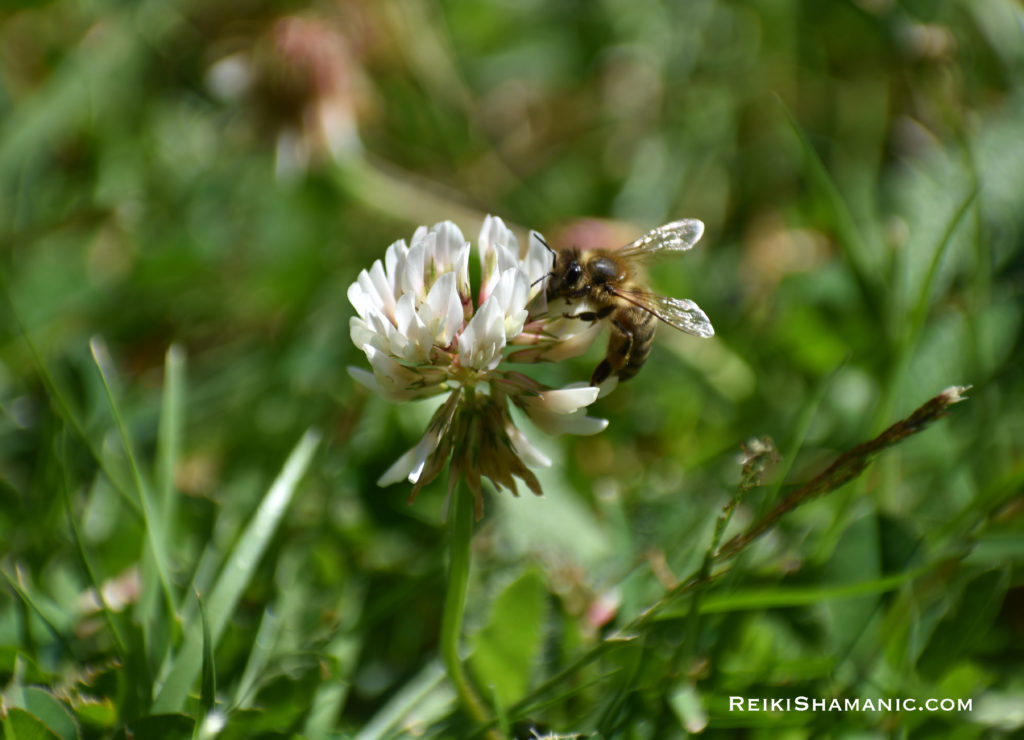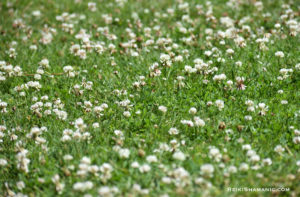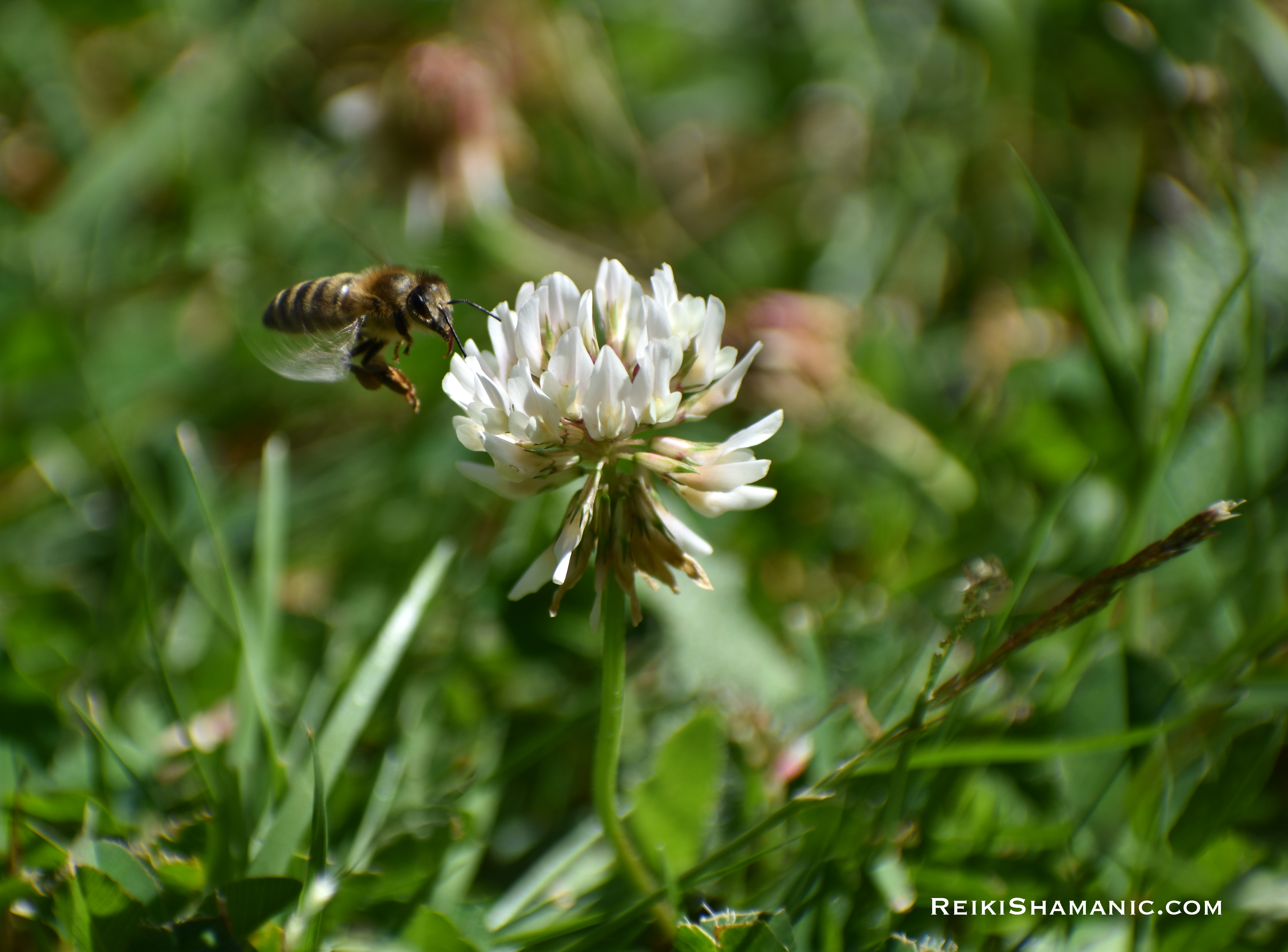One fine summer’s day I was outside enjoying the sun, reading while lying on my lounge chair. Lying on my belly, with my book resting on the ground, the hum of busy bees filled my ears. With the crown of my head almost touching a lushly blooming lavender plant, I could feel the small breezes created by their wings. There were so many that I wondered if there were bees working anywhere else in the neighborhood.
I happen to love bees and they seem to be quite comfortable with me. Occasionally one lands on me for a rest and a grooming session (and yes, a little bit of Reiki) before returning to the seemingly endless task of gathering pollen and nectar while the sun shines.

I took a break from reading to watch them at work, and realized that I had created a garden oasis. The bees had everything they needed: food, water, good energy, a variety of successively blooming plants in the flowerbeds, a yard free of pesticides or herbicides—and something more that I had not planned—clover.
In clusters outside of the flowerbeds sprinkled throughout the lawn, were many patches of blooming white clover—a plant that many homeowners consider a weed and eradicate from their lawns through the use of herbicides.
 I have not used lawn products for many years, and that decision is even more important now with the crisis that bees are facing due to massive die off attributed to neocotinoids. That crisis has caused me to treasure my bee visitors more than ever.
I have not used lawn products for many years, and that decision is even more important now with the crisis that bees are facing due to massive die off attributed to neocotinoids. That crisis has caused me to treasure my bee visitors more than ever.
Looking at the lawn and the numbers of bees enjoying the clover blossoms I resolved to water the areas where they were thriving (I usually don’t water the lawn in summer, with the amount of rain we get here in the PNW it seems to bounce right back from brown to green in the fall).
It seems a small thing, but the numbers of bees attest to the fact that even a small gesture can make a difference. So, I shall do my best to keep the bees in clover.
Bees need our help—here are some suggestions on how to best support them.
Bee Friendly: How to create a pollinator-friendly garden
Join the Buzz: 10 Ways to Save the Bees
Plant Organically Grown Plants – Directory of companies and organizations that sell organic seeds and plants to the general public
->->->->->
Explore growing your inner garden! Learn how to connect more deeply with animals, restore balance to your life, increase intuitive skills, and help heal the Earth with live Reiki and shamanic teleclasses, available worldwide.
->->->->->
SHARE THIS ARTICLE
You are welcome to share this article with others by email, on your blog or to your mailing list so long as you leave it intact and do not alter it in any way. All links must remain in the article. And, you must include the copyright notice and the bio.
©2013 Rose De Dan. All Rights Reserved. www.reikishamanic.com
A WILD WAY TO HEAL
Rose De Dan, Wild Reiki and Shamanic Healing LLC, is an animal communicator, Reiki Master Teacher, shamanic energy healer, and author. Her classes, sessions and ceremonial work are inspired by wild and domestic animals who have issued a call to action for personal and global healing.
Her book Tails of a Healer: Animals, Reiki and Shamanism features heartwarming stories about animals and their role in her evolution as an energy worker and shamanic healer.








I, too, stopped trying to destroy our ‘weeds’ once I learned more about them and our bees love to visit them as well. Doing my bit to help the bees here in Austria!
Excellent, they need each and everyone of us worldwide!